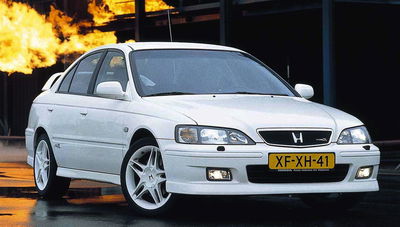9 Discontinued Japanese Performance Cars You Think Deserve A Successor

After we put together a list of discontinued Japanese performance cars that deserve a successor, the comments section lit up with suggestions of other sorely missed motors from the Land of the Rising Sun. With that in mind, we’ve brought together the best suggestions and added a few of our own. Which of these cars do you miss the most?
1. Toyota Celica GT-Four

Based on the fourth, fifth and sixth generations of the Celica, the ST165, 185 and 205 GT-Fours are incredible all-wheel drive weapons which were built to allow Toyota to enter the World Rally Championship. The ST205 is the most powerful, with export models kicking out 252bhp from their turbocharged 2.0-litre four-pots. Unfortunately, the radically-styled seventh-gen Celica was front-wheel drive only, and didn’t have an extreme halo car like its predecessors. The seventh-gen died off in 2006, with no replacement.
2. Mitsubishi Starion

With some ‘oh-so eighties’ boxy styling and a great front-engined, rear-wheel drive chassis, the Starion has a lot going for it. Early cars feature a 2.0-litre turbocharged four-pot capable of 170bhp, making the car decently quick. The Starion name lasted for just one generation, with production running from 1982 to 1991. Mitsubishi hasn’t made a rear-wheel drive sports car since.
3. Nissan Pulsar GTi-R

We’re used to ‘megahatches’ that are able to charge from 0-62mph in around five seconds these days, but when the four-wheel drive Nissan Pulsar GTi-R burst onto the scene in 1990, it seemed like a crazy, alien concept. With the SR20DET engine from its Silvia brother shoehorned under the bonnet, the GTi-R is good for 220bhp and 0-62mph in just 5.2 seconds.
The Pulsar name was recently revived by Nissan. We wouldn’t be surprised if it ends up with the same fettled 1.6-litre DIG-T engine as the Juke Nismo, but with 197bhp available, that engine is less powerful than the old SR20DET, and it’s a weedy sounding thing. Plus, you can almost guarantee that any hotter Pulsar won’t come with four-wheel drive.
UPDATE: Nissan has since released a ‘Pulsar Nismo’ concept with a much more promising 247bhp. However, given that the concept is front-wheel drive, it’s highly likely any production version will be too, meaning it won’t quite be a true successor to the old GTi-R.
4. Mitsubishi Galant VR4

Sort of like a Lancer Evolution for more discerning types, Galant VR4s are blessed with a 2.5-litre twin-turbo V6 under the bonnet, powering all four wheels. With 276bhp on tap these eighth-gen Galant-based cars really shift, being able to crack 0-62mph in under six seconds. The ninth-gen Galant - discontinued in 2012 - almost got up to the same power output of the VR4 with some iterations of Mitsubishi’s 3.8-litre V6, but there wasn’t a four-wheel drive option, and the bulbous styling of the final Galant can’t match the VR4’s understatedly aggressive look.
5. Honda Prelude

Like the Integra which featured in the previous list, the Prelude is a Honda coupe we sorely miss. Production ran from 1978 to 2001 through five generations, and it’s probably the pretty fourth-gen car we have the biggest soft spot for, with its funky electronic dash. Certain versions from the third generation onwards feature Honda’s innovative four-wheel steering technology. The most powerful examples of the final generation came with a 217bhp H22 VTEC engine, and after the manufacture of these finished in 2001 amid poor sales, the Prelude was no more.
6. Mitsubishi Eclipse

The Eclipse may not have the kudos of other discontinued Mitsubishi coupes like the 3000GT and Starion, but it’s still missed by many in the car community, with production ending in 2011. The most powerful final versions came with 259bhp 3.8-litre V6 engines.
7. Honda Accord Type-R

Much like the Mazda 6 MPS in our previous list, the Accord itself is still with us, but after the sixth-generation Type-R ceased production in 2002, we haven’t seen a proper hot version of the saloon since. With a 2.2-litre VTEC engine under the bonnet, Accord Type-Rs are good for 209bhp, making 0-62mph possible in just over 7 seconds. A finely-tuned chassis and a limited-slip differential make these Type-R’d Accords brilliant driving machines.
8. Subaru Legacy B4 RSK

If you want a hot Subaru, your options are a little limited these days. In the UK, there’s the WRX STI, the BRZ, and that’s your lot. It hasn’t always been that way. The Legacy range has included some scorchers in the past, our favourite being the B4 RSK. With a twin-turbo boxer-four under the bonnet, it’s good for 276bhp. There’ve been a handful of reasonably powerful six-cylinder Legacys since then, but nothing with quite the same punch.
9. Honda CRX

Production of the Civic-based CRX ran from 1983-1997, but it’s only the first two generations (83-87, 87-91) that really interest us. The first two versions of the CRX are strikingly-styled sporty hatchbacks, with the second generation adopting a distinctive glass tailgate. The most powerful variant of the latter car has a 1.6-litre VTEC engine, which develops a punchy 150bhp.
A third generation arrived in 1992, but that car is a different machine altogether, with a targa top and cutesy styling. It wasn’t even sold as the CRX in some markets. After that car died off in 1997, we’ve yet to see the CRX name on a new Honda again. The CRZ is considered by some to be a spiritual successor, but we’re not so sure, as it’s more about efficient hybrid technology than performance.














Comments
No comments found.